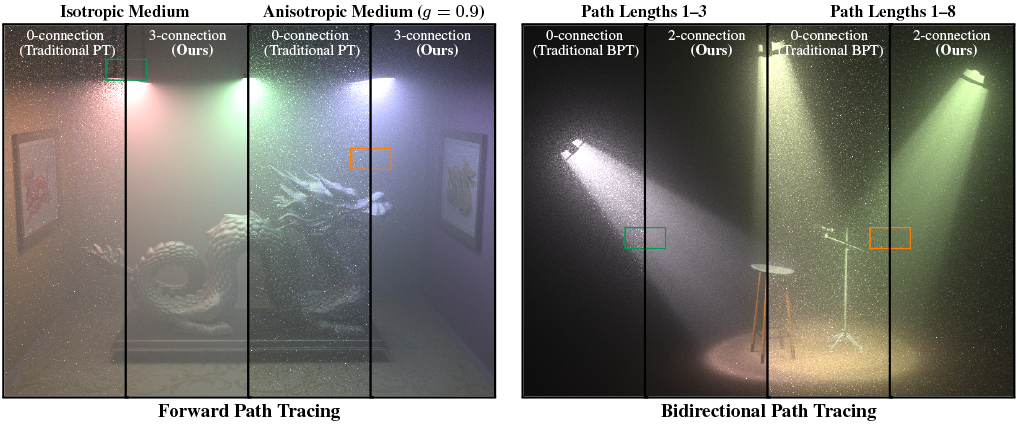Joint Importance Sampling of Low-Order Volumetric Scattering
We analyze why current incremental construction schemes often lead to high variance in the presence of participating media, and reveal that such approaches are an unnecessary legacy inherited from traditional surface-based rendering algorithms.
November 1, 2013
ACM SIGGRAPH Asia 2013
Authors
Iliyan Georgiev (Disney Research)
Jaroslav Křivánek (Charles University, Prague)
Toshiya Hachisuka (Aarhus University)
Derek Nowrouzezahrai (Disney Research)
Wojciech Jarosz (Disney Research)
Joint Importance Sampling of Low-Order Volumetric Scattering
Central to all Monte Carlo-based rendering algorithms is the construction of light transport paths from the light sources to the eye. Existing rendering approaches sample path vertices incrementally when constructing these light transport paths. Paths should ideally be constructed according to a joint probability density function proportional to the integrand, yet current incremental sampling strategies only locally account for certain terms in the integrand. The resulting probability density is thus a product of the conditional densities of each local sampling step, constructed without explicit control over the form of the final joint distribution of the complete path. We analyze why current incremental construction schemes often lead to high variance in the presence of participating media, and reveal that such approaches are an unnecessary legacy inherited from traditional surface-based rendering algorithms. We devise joint importance sampling of path vertices in participating media to construct paths that explicitly account for the product of all scattering and geometry terms along a sequence of vertices instead of just locally at a single vertex. This leads to a number of practical importance sampling routines to explicitly construct single- and double-scattering subpaths in anisotropically-scattering media. We demonstrate the benefit of our new sampling techniques, integrating them into several path-based rendering algorithms such as path tracing, bidirectional path tracing, and many-light methods. We also use our sampling routines to generalize deterministic shadow connections to connection subpaths consisting of two or three random decisions, to efficiently simulate higher-order multiple scattering. Our algorithms significantly reduce noise and increase performance in renderings with both isotropic and highly anisotropic, low-order scattering.

